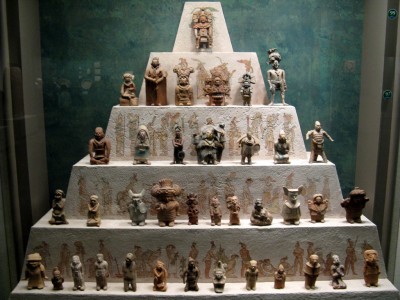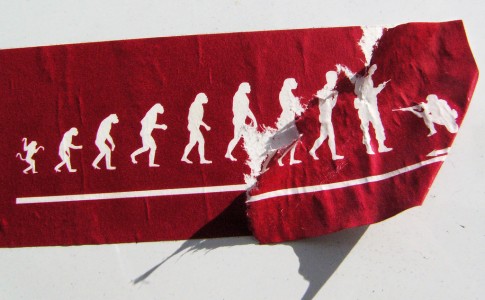Images for Presentations: A Few Examples from #PODHBCU
Last month, Jose Vazquez and I facilitated a session titled “Everyone’s a Visual Learning: Using Visual Thinking in the Classroom” at the POD Network / HBCU Faculty Development Network joint conference in Atlanta. In my session recap, I noted that during the session we asked participants to search for Creative Commons images they might use in presentations, using the Flickr search tool Compfight. Below are a few of the images participants found and shared with us.
Jane Barnette found the above image, “Ceramic Hierachy” by Flickr user Travis S., while searching for something appropriate for teaching students about outlines. She searched first for “outline,” then “organization,” and then “hierarchy,” the latter term turning up this photo taken at the National Museum of Anthropology in Mexico City.
Meg Bakewell wanted an image to represent falsifiability. A statement is falsifiable if it is capable of being proved false (whether or not it is actually false). The classic example is the statement “All swans are white.” All it takes to prove that statement false is to find a single black swan. Thus the image above, “Black Swan” by Richard Sandford.
Here’s what Peter Felten told me (via email) about the above image, “Evolution” by Premasagar Rose:
We were looking for images linked to change over time, a common theme in history courses. This image strikes me as likely to provoke class discussion — with the “progress of man” imagery on the left side, and then the tear when modern-ish humans appear, leading to the two images of soldiers, ending with the one apparently aiming back at the past. The “progress of man” image typically is seen as being about positive, perhaps even inevitable, development from ape to human (from savage to civilized, etc.). Is (or isn’t) this image a representation of how societies/people actually have developed over the eons?
Peter’s expertise in the area of visual literacy is evident in this analysis. See his “resource review” on visual literacy in Change Magazine for a great introduction to the area.
While preparing this post, I realized that our directions to participants in our session must not have been completely clear. Many of the participants sent me links to copyrighted images, not images with Creative Commons licenses. As easy as it is to find great images online these days (particularly via Compfight), it’s still important to respect people’s intellectual property. You can use a copyrighted image in a presentation, but you need to seek permission from the copyright holder first. That’s not impossible, but there are plenty of Creative Commons images available that might give you what you need without having to go through the permissions process.


